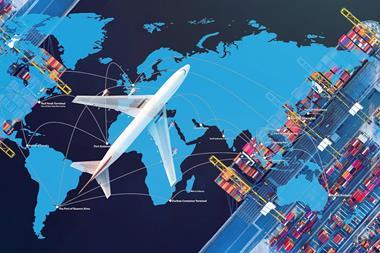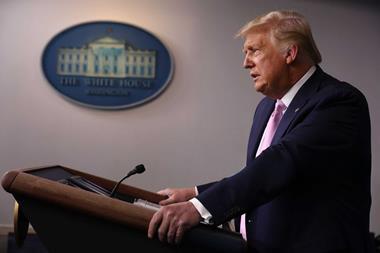
Source: Shutterstock
The US has paused planned tariffs on a range of countries but escalated its trade war with China, with rates on imports from the country now up to 145%.
The White House yesterday upped its tariffs on China after Beijing announced retaliatory tariffs of 84% (since increased to 125%).
However, the US also announced a 90-day pause on tariffs for countries facing tariffs higher than its baseline 10% rate announced earlier in the month.
Countries breathing a sigh of relief include Japan which was facing a 24%, Vietnam which was facing 46%, Taiwan at 32% and the European Union member states at 20%.
However, the US has also implemented a 25% tariff on autmobiles that started last week, along with a 25% tariff on automobile parts due to come into force in May. Canada and Mexico also face tariffs for goods outside to the North American Free Trade Agreement.
Also in May, the US is set to end the de minimis exemption for Chinese e-commerce parcels, which have fuelled much of the air cargo market’s growth over the past few years.
The air cargo market is tentatively watching the situation unfold, with the constant changes to tariffs making it difficult for companies to know how to respond.
Rate portal Freightos said the tariffs were creating uncertainty: “In addition to roiling markets and increasing the likelihood of recession, the plan is also leading to significant uncertainty and confusion for supply chains in terms of understanding the moves as protectionist or aimed at removing foreign trade barriers, as long-term or temporary.”
It added that the air cargo market had benefited from a rush of demand in the last couple of weeks as importers sought to beat the implementation of tariffs and there could be a further rush in May ahead of the automobile part and e-commerce changes.
TAC Index reported that e-commerce Block Space Agreements for as soon as May were being cancelled due to concerns over the de minimis change, although rates out of May were still on the rise last week.
TAC editor Neil Wilson wrote last week that the constant changes to tariffs was making it difficult for companies to plan ahead.
“All of this has also made it more difficult for market participants – including airlines, forwarders, and shippers – to plan ahead with confidence,” Wilson said.
“That is also before taking into account the potential responses of other trading partners – and all the uncertainties about that. In the meantime, a more pessimistic mood about the global economy has taken hold – with expectations of US growth falling.”
Xeneta said that companies should keep options open through contract clauses that allow renegotiation; carry out simulations of alternative supply chain set ups; and consider index-linked deals.
The data house and consultant added that shippers could look to use alternative routings through countries that have a lower trade surplus with the US than China.
“A shipper could feasibly send their goods from China to Brazil for onward transport to the US east coast,” it said.
“The shipper needs to demonstrate the origin of the goods is Brazil not China, whether that is by repackaging or repurposing, but the key point is the scale of the tariffs incentivises shippers to get creative and play this compliance game.”
However, it warned this would make supply chains increasingly complex.


















